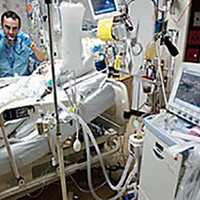Intubation and mechanical ventilation of patients with COVID-19: what should we tell them?

Published: April 8, 2020
Abstract Views: 7337
PDF: 3852
Publisher's note
All claims expressed in this article are solely those of the authors and do not necessarily represent those of their affiliated organizations, or those of the publisher, the editors and the reviewers. Any product that may be evaluated in this article or claim that may be made by its manufacturer is not guaranteed or endorsed by the publisher.
All claims expressed in this article are solely those of the authors and do not necessarily represent those of their affiliated organizations, or those of the publisher, the editors and the reviewers. Any product that may be evaluated in this article or claim that may be made by its manufacturer is not guaranteed or endorsed by the publisher.
Similar Articles
- Simone Pasquale Crispino, Andrea Segreti, Ylenia La Porta, Paola Liporace, Myriam Carpenito, Valeria Cammalleri, Francesco Grigioni, A sudden right-to-left shunt: the importance of evaluating patent foramen ovale during exercise , Monaldi Archives for Chest Disease: Vol. 94 No. 1 (2024)
- Ankit Bansal, Prattay Guha Sarkar, Mohit D. Gupta, M.P. Girish, Shekhar Kunal, Vishal Batra , Jamal Yusuf , S. Safal, Saibal Mukhopadhyay , Sanjay Tyagi , Prevalence and patterns of coronary artery anomalies in 28,800 adult patients undergoing angiography in a large tertiary care centre in India , Monaldi Archives for Chest Disease: Vol. 92 No. 3 (2022)
You may also start an advanced similarity search for this article.

 https://doi.org/10.4081/monaldi.2020.1296
https://doi.org/10.4081/monaldi.2020.1296




